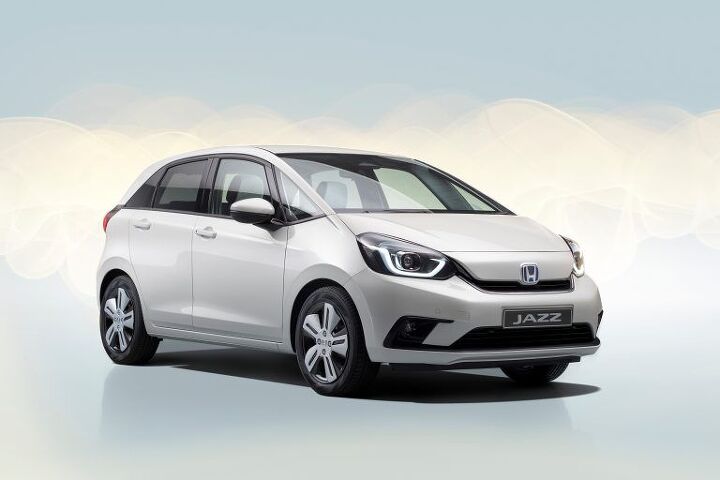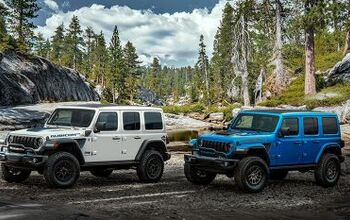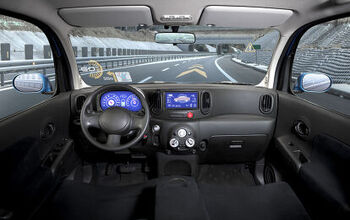2020 Honda Fit: Vibrant, Newly Electrified, and Possibly Not Bound for a Dealer Near You

Honda last revamped its subcompact Fit hatchback for the 2015 model year, tossing the entry-level model a styling refresh for 2018. Now, there’s a new Fit on the block (or Jazz, depending on market), but its availability in the U.S. remains a question mark.
Sales of most subcompact cars have followed a trajectory traced by their compact and midsize stablemates, and it points nowhere but down. If Honda feels it’s worthwhile shipping the Fit across U.S. borders, what you see here could be yours.
Unveiled at the Tokyo Motor Show on Wednesday, the 2020 Fit is undoubtedly the smallest Honda to adopt a floating roof design. It’s also the smallest Honda currently in the lineup to boast a hybrid drivetrain (RIP, previous-gen Insight).
The model revealed in Tokyo carries Honda’s two-motor hybrid system. For Europeans, this is the only powertrain available; specs remain unknown at this time. Honda claims its e:HEV setup allows for fully electric driving in “virtually all situations of everyday driving,” so that’s an interesting addition to the subcompact class. Such technology normally warrants a higher price, which further dims the Fit’s U.S. prospects — assuming the brand doesn’t have a gas-only solution in mind.
While the front of the fourth-generation Fit’s greenhouse brings to mind GM’s 1990s Dustbuster minivans (or perhaps European small cars of the past decade or so), the vehicle’s front end is something of a departure from the brand’s design language. Honda intends the Fit to set the standard of small-car excellence. Offered in five trims in Japan — Basic, Home, Ness, Luxe, and crossover-mimicking Crosstar — the new Fit places the fuel tank beneath the front seats, allowing owners to flip up the rear seat bottom to muscle tall items into the backseat.
Those seats, by the way, are of a body-stabilizing design borrowed from development of the brand’s premium cars. Fatigue will become a thing of the past, Honda claims. A suit of Honda Sensing driver-assist and safety features should make the trip all the more stress-free.
Beyond that, there’s little else to tell you. Honda hasn’t loosened its lips about American availability, and until it does, any specs pertaining to the car’s hybrid drivetrain aren’t of much use to the reader. Not that we have any.
Fit sales peaked in the U.S. in 2008, a year in which the little hatch sold nearly 80,000 units. Since then, it’s been a gradual decline, with last year’s volume sitting at just over 35,000. Despite the recent refresh, Fit sales are down 17.2 percent through the end of September.
[Images: Honda]

More by Steph Willems
Latest Car Reviews
Read moreLatest Product Reviews
Read moreRecent Comments
- Dave M. I'm sorry to see any storied name go away. The lifespan of the Malibu has fit perfectly in my lifetime years-wise. Some of the highlights include the first and second generations, the '78 revamp (very clean design), and the 2005 generation. Ford, GM and Mopar gave this segment away by allowing Toyota and Honda a foot in the door and then always having to play catch-up. How hard is it to make a truly competitive sedan at a profit? Obviously, Japan Inc. figured it out.I've driven a few rentals these past years; the Malibu got the job done but honestly the Passat and Altima were my rental preferences.
- Kcflyer actually yes. It's a shame that a product this uncompetitive can still outsell GM's entire EV offerings. Those products have had billions thrown at them. Imagine how nice the new Malibu, Impala, SS, and Lacrosse would be with that kind of commitment.
- 3SpeedAutomatic Nope....
- Bd2 Looking forward to flooding the rental lots with Hyundai and Kia models, this is just one obstacle now eliminated.
- Kcflyer keep the color. lose the stupid front design. make it reliable, at least as reliable as a base 911. Then and only then is it somewhat worthy of that price.





































Comments
Join the conversation
I like the interior as pictured, for this price point. Definitely not the penalty box of yore - I've driven many of them! Also, people like me who prefer cloth must be dying out just like the manuals.
Those taillights look like they're trying to ape the i3, slightly. What's the difference between the white one and the bluish one. The grilles are different? Also, bravo for not going full Civic and making a car that's trying too hard to be "exciting." The looks to be a perfectly cromulent little runabout. Not something I'd like to own, but something I can respect.